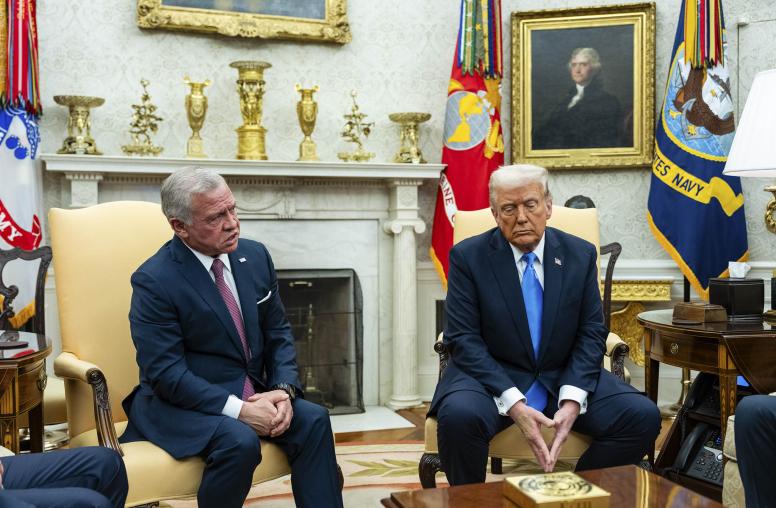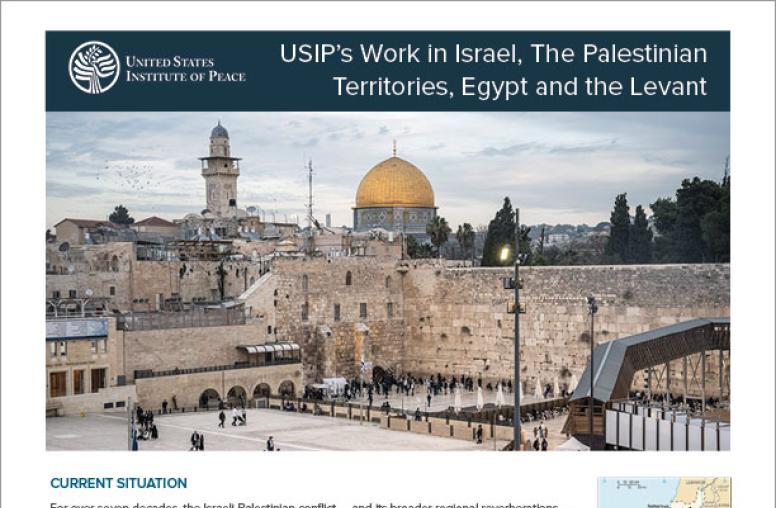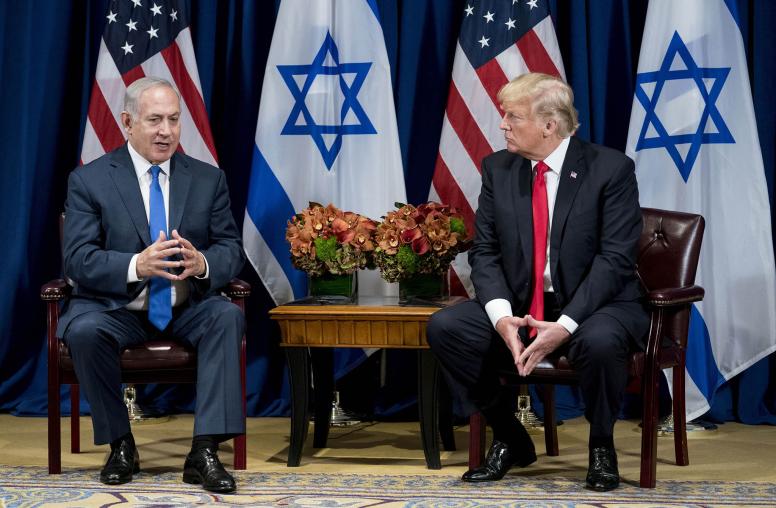An Education Track for the Israeli-Palestinian Peace Process
Education plays a critical role in preparing communities for change and has made important contributions to post-conflict reconciliation in numerous war-torn societies, yet education issues have largely been excluded from past efforts to resolve the Israeli-Palestinian conflict. A new USIP report argues why an education track should be included in the negotiations phase and in the text of an agreement itself, and puts forward practical recommendations on how Israelis and Palestinians – and the international community – can move forward with a successful peace process that incorporates education.

Overview
President Barack Obama declared in his June 4th address at Cairo University that "all of us must recognize that education and innovation will be the currency of the 21st century." Education plays a critical role in preparing communities for change. This is especially relevant regarding Israeli-Palestian peace efforts. Indeed, education can be an important component to foster positive change in social values, attitudes and skills that are necessary to overcome years of painful conflict. Alternatively, education can reinforce conflict-producing myths and stereotypes, serving as a battleground where social groups are all too often demonized. Education has been able to make an important contribution to reconciliation, conflict prevention, post-conflict reconstruction, and the re-building of war-torn societies, including in Northern Ireland, South Africa, as well as France and Germany after World War II, or in Poland and the Baltic States after the end of the Cold War. Yet, educational issues have largely been excluded from past efforts to resolve the Israeli-Palestinian conflict.
A new USIPeace Briefing examines how the parties and international mediators can create an education track for the peace process that would create opportunities for more effective mediation and increase the chances for success of the process overall. The report recommends ways third party mediators can assist Israelis and Palestinians by addressing education in the peace agreement itself; building a role in the respective ministries to address the effects of the continuing violent conflict; and developing mechanisms in which frustrations arising from implementing a peace agreement itself can be discussed and facilitated within the network of schools. Authors Barbara Zasloff, Adina Shapiro, and USIP’s A. Heather Coyne argue how teachers and schools can play vital roles in defusing tensions and helping the youth understand their evolving environment and find places for themselves within it. Positioned to change attitudes and teach new skills, schools have exceptional outreach to all levels of society, the authors conclude.
About the Authors
This USIPeace Briefing was written by A. Heather Coyne, a senior program officer in the Center for Mediation and Conflict Resolution at the United States Institute of Peace, Barbara Zasloff, founder and president of the International Center for Contemporary Education which promotes responsible citizenship through education and currently administers programs in Israel and in Gaza, and Adina Shapiro, who co-managed a joint Palestinian-Israeli education NGO.



